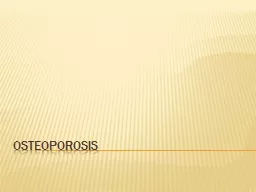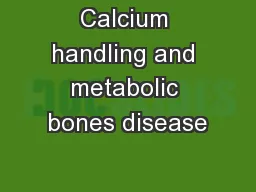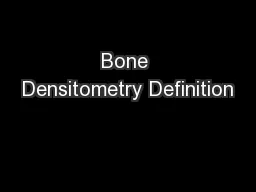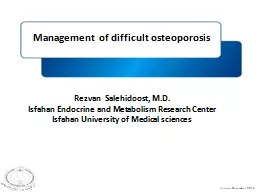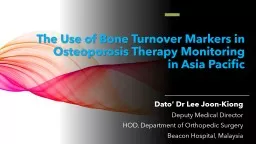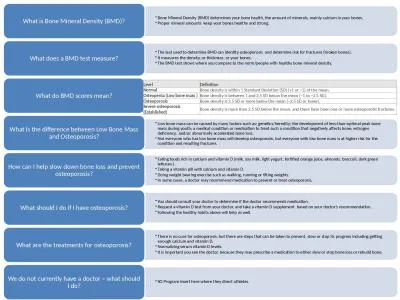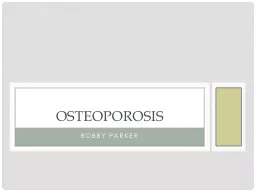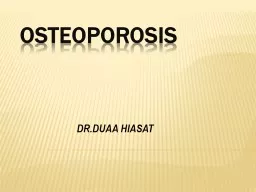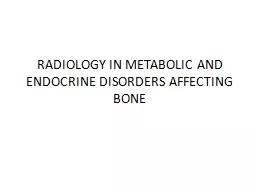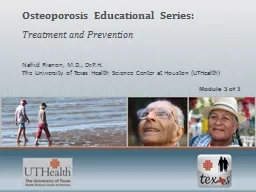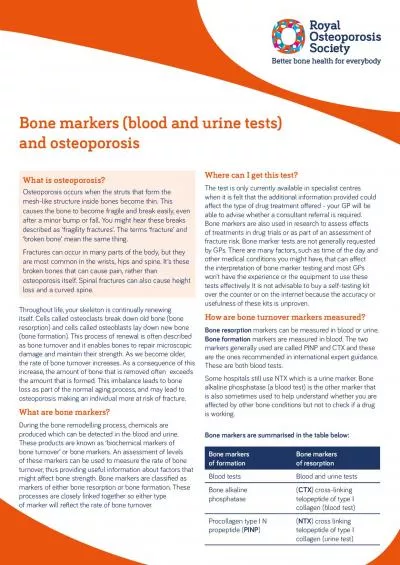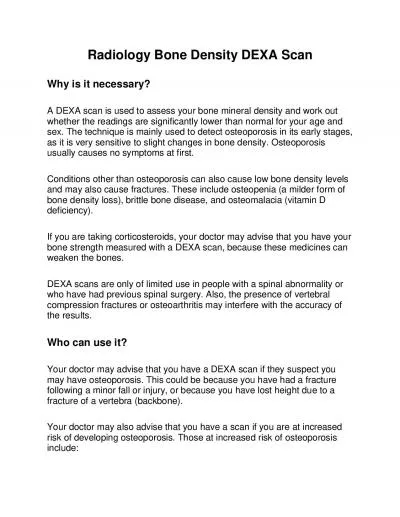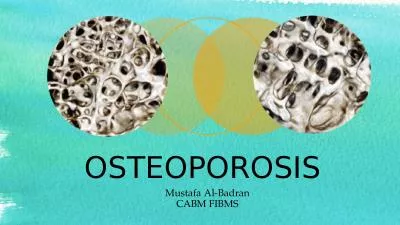PPT-Osteoporosis Key Points Osteoporosis is the most common metabolic bone disorder resulting
Author : eleanor | Published Date : 2022-06-07
low bone density It occurs when the rate of bone resorption osteoclast cells exceeds the rate of bone formation osteoblast cells resulting in fragile bone
Presentation Embed Code
Download Presentation
Download Presentation The PPT/PDF document "Osteoporosis Key Points Osteoporosis is ..." is the property of its rightful owner. Permission is granted to download and print the materials on this website for personal, non-commercial use only, and to display it on your personal computer provided you do not modify the materials and that you retain all copyright notices contained in the materials. By downloading content from our website, you accept the terms of this agreement.
Osteoporosis Key Points Osteoporosis is the most common metabolic bone disorder resulting: Transcript
Download Rules Of Document
"Osteoporosis Key Points Osteoporosis is the most common metabolic bone disorder resulting"The content belongs to its owner. You may download and print it for personal use, without modification, and keep all copyright notices. By downloading, you agree to these terms.
Related Documents

